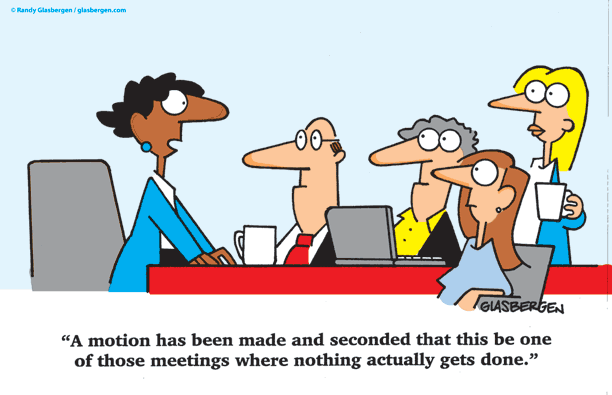German Psychologist Herman Ebbinghaus (1850 – 1909) studied human memory extensively and his research showed that an average person will forget about 50% of the new information within the first 1 hour of hearing it.
There is a widespread internal validity to his findings. Despite this, so many organizations ‘forget’ (pun intended) to implement simple steps to plug this issue.
We’ve all experienced the disappointment of finding that our well-intentioned and collaborative meeting barely achieved anything. Worse still, is when we come to the realization that we need yet another meeting.
Why do meetings fail?
There are plenty of reasons why meetings fail to achieve results and why so many of us dread them. One of the reasons is that people have multiple meetings lined up and so they are always running in between meetings which makes it hard to focus on issues. Then there are times when meetings go ahead without the presence of the key person(s). For the sake of argument, we will keep aside all the inherent communication challenges that people face due to technology, culture or lack thereof.
Here’s how to run efficient meetings (or how to avoid death by the meeting)
- Set a meeting well in advance so that you can get calendar availability. Use simple outlook or calendar features to check whether attendees are available. For any meeting where you can not give sufficient lead time – be clear in your communication and explain why the urgency.
- Early Bird gets the worm / Move Early: Always spend time setting the Agenda for the meeting and send relevant reading material in advance. A meeting that does not have an agenda to begin with or an outcome to end with is a form of social event which no working person wants to be part of.
- Ask attendees to go through the agenda or any material that you may have sent in order to save time. The same rule applies to you
- MoM or Minutes of Meeting: Capture notes during the meeting. Divide them into two topics.
- Discussion points: Capture notes and key takeaways
- Action items: Capture the list of specific actions that will be taken, by which people, and by when.
- Distribute the Minutes of Meetings (MoM) within 24 hours, if not sooner. This will also demonstrate your professionalism and dedication.
- Be regular and persistent in your follow-ups. Follow-up is a necessary evil, not so much in a start-up environment but in a bigger organisation where it is a lot more common to have multiple priorities.
The key to success is to follow up closely and consistently.
– Consultant
Finally, if you think that you can not add value and the meeting does not add any value to you then politely reject the meeting. Let someone else more relevant attend the meeting.
We hope you found this article helpful. And please reach out if you’d like a template for Minutes of Meeting. We would also love to hear from you on your experience or feedback.
References:
clipart.email
